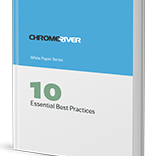![]() With rising confidence in the U.S. economy, many organizations plan to strengthen their ranks this year by hiring new employees and rewarding valuable staff with salary increases, according to an article on the Accounting Today website. Each new employee means new paperwork, including expense reports, so it’s imperative to take a look at how your organization handles tracking business expenses.
With rising confidence in the U.S. economy, many organizations plan to strengthen their ranks this year by hiring new employees and rewarding valuable staff with salary increases, according to an article on the Accounting Today website. Each new employee means new paperwork, including expense reports, so it’s imperative to take a look at how your organization handles tracking business expenses.
In a survey of 1,259 comptrollers and CFOs, 40 percent say their company plans to increase staff, which reflects growing optimism about the economy. The 2013 Spring CFO Survey, by Grant Thornton, also shows that 65 percent of respondents expect the average employee salary to increase over the next year, while the total cost of benefits remains unchanged.
This surge of employees could push an inefficient or manual expense management system to the breaking point, and make a company vulnerable to expense abuse and fraud. These problems are very real for organizations that are hampered by manual data entry and inefficient processes. These issues make it very difficult to enforce corporate travel policies. That characterizes 39 percent of those companies surveyed in 2012 by PayStream Advisors.
Tracking business expenses manually is far less efficient than a fully automated expense management system, and costs more than twice as much. Processing an expense report manually costs an average of $21.41 compared to $8.50 per report with an automated system, according to PayStream Advisors. This disparity in cost will become more apparent as companies grow, with larger numbers of employees and expense reports to manage.
For companies that currently struggle to enforce travel policies, more employees will also mean more missed savings opportunities due to a lack of visibility into spending and additional unforeseen risks, such as a lack of regulatory compliance and exposure to expense reimbursement fraud.
These are more reasons why a growing company should consider adopting a fully automated expense policy. Automated expense management software can make business expense tracking more streamlined, cost-effective and transparent. Thanks to better access to facts and data, managers may be able to negotiate more cost-effective travel arrangements, spot errors or malicious fraud earlier, issue better rules and spending guidelines, and identify opportunities for preferred vendor relationships.
We’d like to hear about your experiences. How do you think an influx of new employees affects an inefficient or manual expense management system? What additional tips would you offer for organizations that anticipate a larger staff over the next year?
Source: AccountingToday.com, May 2013
Subscribe
Latest Posts
Posts by Category
I just love the Chrome River application. I could probably sell it! Finance Administrative Coordinator Law Firm, 800 Employees
Can’t we just move year-end, so that we can roll out Chrome River sooner!? Financial Systems Director Law Firm, 300 Employees


Comments